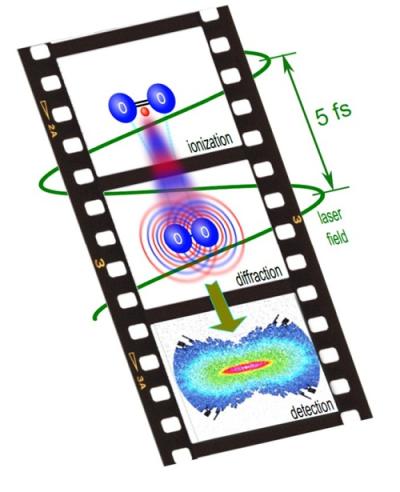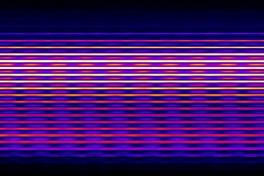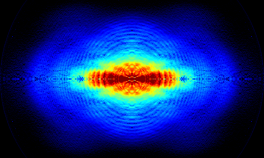Spatio-Temporal Molecular Imaging

During the past century, our ability to follow initial steps in chemical reactions has progressed from the millisecond timescale of human reaction to the femtosecond regime.
Chemical reactions, of course, begin with the electron motion on the attosecond timescale (1 attosecond = 10-18 s) followed by a restructuring of the potential energy surface causing nuclear dynamics on the femtosecond timescale (1 femtosecond = 10-15s).
Therefore, in order to fully understand and control chemical reactions, it is necessary to understand both electron orbital and nuclear dynamics.
Our research is built around two facets of the molecular self-probing paradigm derived from the strong-field rescattering model and scaled to long wavelengths:
- Electron Orbital Tomography
- Molecular Geometry Reconstruction
We want to use these two methods to effectively make "movies" of the molecules as depicted in the illustration above.

Understanding of electron orbital dynamics is one of two aspects necessary for control of chemical reactions, the other being knowledge of the nuclear dynamics.
In order to study the electron orbital dynamics, which occur on the attosecond time scale, we are using a tomographic approach to reconstruct them.
Tomography using High Harmonic Generation (HHG) consists of imaging the full three-dimensional structure of a molecular orbital using the harmonics generated from intense laser pulses focused on aligned molecules.
A strong, linearly polarized, mid-infrared laser-field ionizes the pre-aligned molecules, and some portion of those electrons are absorbed back into the atom after gaining a large amount of energy in the electric field.
Upon recombination with the nucleus, a harmonic photon of the fundamental laser field is emitted in the ultraviolet to soft x-ray regime.
Information from the emitted harmonics is used to reconstruct angle-dependent properties of the electronic orbitals.
We are currently performing tomographic pump-probe experiments for imaging the molecular orbital wavefunctions of molecules.
Above you can see a RABBITT (Reconstruction of Attosecond Beating by Interference of Two-Photon Transitions) scan. From images like this one, we can retrieve information about the orbitals of the gas where the harmonics were generated.

In order to fully understand and control chemical reactions, it is necessary to understand the nuclear dynamics of the molecules in addition to the electron dynamics.
In order to probe the nuclear dynamics, we use an original method called Laser-Induced Electron Diffraction (LIED).
In this method, an intense mid-IR laser field ionizes the electrons from the molecule, and then scatters the electron off the molecule causing the electrons to diffract through the molecule.
The molecular structure is retrieved from the photoelectron momentum distribution, as seen above from a VMI (Velocity Map Imaging) image, with sufficient space-time resolution to observe the motion of the nuclei as directly as conventional electron diffraction measures equilibrium nuclear positions.
Currently we are performing experiments to extract the molecular geometry of simple and complex molecules.
